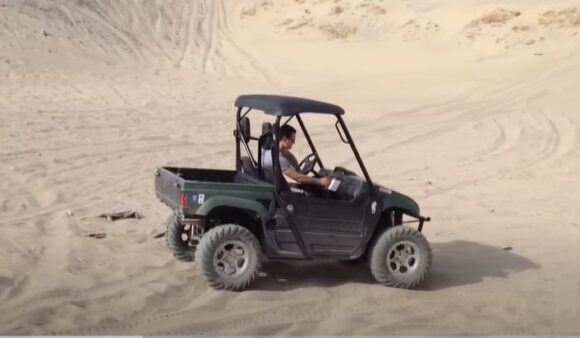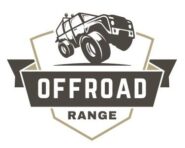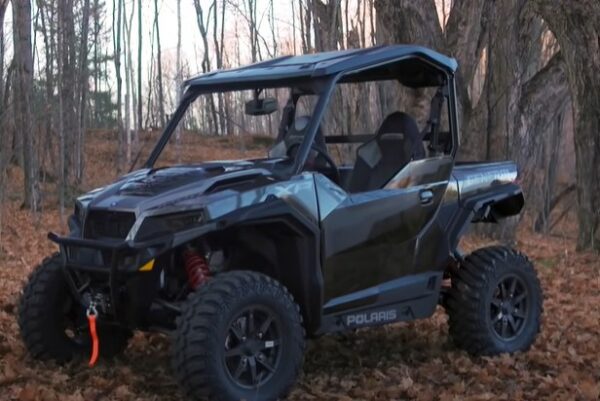I had been dreaming about owning a UTV for years. After months of saving up and researching different models, I drove to the dealership with excitement!
Little did I know that this purchase would soon be filled with problems that would turn my dream into a nightmare.
Over the next few years, more and more people began experiencing similar issues with their Rhinos, and it became clear that there were some problems in this model which needed to be addressed.
In this article, we’ll discuss some of the common Yamaha Rhino 450 problems so you can make an informed decision before investing your hard-earned money into this UTV.
Yamaha Rhino 450 Problems

1. Transmission Problem
The transmission problem in the Yamaha Rhino 450 is a common problem that many riders experience.
This problem occurs when you let off the gas and can cause the vehicle to slow down quickly, as well as make a grinding noise.
The main reason for this problem is usually an issue with the weights inside of the primary sheave, which is responsible for providing power to the drive train.
When these weights become unaligned or fall out of place, they can cause performance issues.
In order to fix this issue, you will need to inspect the primary sheave by removing the belt cover and pulling apart its components.
You should then carefully check all of the weights and cam for any signs of damage or displacement. If any weights appear to be damaged or out-of-place, it’s best to replace them completely.
Also, you should also check for middle drive gear problems by removing the three front diff bolts, front drive shaft, and front cover with the u-joint attached.
2. Fuel Pump Problem
Another common problem that you can face is a fuel pump problem. This problem usually occurs when the fuel pump fails to deliver enough fuel to the engine cylinders, which results in a lack of engine performance.
The main causes of this issue are usually a faulty fuel pump, a clogged fuel filter, or an issue with the delivery system itself.
In order to fix this issue, you will need to inspect your vehicle first for any signs of problems with your fuel pump or delivery system. If necessary, you should replace any damaged components such as spark plugs or filters that could be contributing to the issue.
Also, you should also check for any signs of corrosion or debris buildup within your delivery system; if these are found then they should be cleared away before further use.
You should also consider having your vehicle professionally serviced if none of these steps resolve the issue.
3. Ignition Switch Not Working
Some Yamaha Rhino 450 users are experiencing an ignition switch issue where the key to start the vehicle is not working.
The first thing you should do is check both fuses on the starter relay.
A faulty ground wire may also be causing the issue. If this connection is not properly maintained, then it can lead to problems with starting up and running the vehicle.
So, you will need to take apart the relay box and locate and inspect all of its components for any signs of damage.
Other things which can affect ignition switch performance are other wiring issues such as loose or corroded connections, incorrect wiring configurations, or shorts in any of the wires leading from the switch itself.
Checking for proper voltage at all locations within these circuits can help pinpoint where exactly a short may occur and get it repaired quickly.
If all else fails then replacing the ignition switch with a new one may be needed since it could just be worn out over time due to usage and age-related factors, such as corrosion or buildup of dirt particles on its contact surfaces.
4. Won’t Idle
Many Rhino 450 owners have experienced an issue where the engine will fail to idle properly. This problem usually manifests itself as the engine either stalling out or running too slowly despite being at the correct RPM.
In extreme cases, the vehicle may not even start up in the first place.
One of the most common issues is improper carburetor settings, which can cause the engine to run too lean or too rich.
Another potential cause is clogged fuel injectors, which can lead to poor atomization and reduced efficiency.
Also, bad spark plugs can also lead to misfiring and other ignition problems that make it difficult for the engine to maintain an optimal idle speed.
The first step would be to check all fuel lines for blockages and replace any worn-out components such as spark plugs or air filters.
After that, it’s important to adjust the carburetor settings according to manufacturer specifications and inspect all fuel injectors for signs of wear or damage.
5. Won’t Start
Some users also experienced starting problems with their Yamaha Rhino 450 UTV.
One of the more common causes is a dirty or clogged air filter. If the air filter appears clogged or excessively dirty, it should be immediately replaced to restore proper engine function.
Other causes are a weak or faulty spark plug or ignition coil, which are responsible for providing the spark required for combustion.
So, you should inspect all of these parts in order to fix your UTV.
More serious causes of starting problems are malfunctioning sensors or wiring issues related to electrical components such as the fuel pump, fuel injectors, and throttle position sensor.
In this case, a professional mechanic should inspect and diagnose these components.
Solutions and Preventive Measures
Regular Maintenance
- Routine Checks: You should perform routine checks before each ride. This should include inspecting fluid levels (oil, coolant), brakes, tire pressures, and the condition of all belts and hoses.
- Servicing Intervals: Stick to Yamaha’s recommended service intervals. Regularly changing the oil, replacing spark plugs, and checking the air filter can prevent many common engine problems.
- Professional Inspections: At least once a year, or after any significant incident, have the Rhino 450 inspected by a professional. They can spot potential issues before they turn into bigger problems.
- Stay Updated with Recalls: Manufacturers sometimes recall certain vehicle batches due to identified issues. Ensure that you’re on the mailing list for any recall notices, and regularly check Yamaha’s official website.
Aftermarket Parts & Modifications
- Research Before You Buy: Not all aftermarket parts are created equal. Before purchasing, do thorough research and check reviews. It’s worth investing in higher-quality parts that have good feedback from the Rhino community.
- Engine and Transmission Upgrades: If there have been frequent engine or transmission issues, consider aftermarket parts designed to enhance performance and durability. These might include better-quality belts, enhanced cooling systems, or even performance chips.
- Safety Enhancements: Given the roll-over concerns, owners can consider installing aftermarket roll cages, enhanced seat belts, or harness systems to improve safety. Additional protective gear like helmets, gloves, and protective clothing can also help in case of accidents.
- Electrical Upgrades: For those facing electrical issues, particularly with lighting, there are many aftermarket kits that not only solve the problem but might also offer brighter and more energy-efficient solutions.
- Suspension Enhancements: Upgrading to a higher-quality suspension system can address some of the wear and tear issues, providing a smoother ride and longer lifespan for the vehicle.
Is Yamaha Rhino 450 Reliable?
Yes, the Yamaha Rhino 450 is a reliable UTV. It comes with powerful performance and easy handling, which makes it suitable for all kinds of terrain.
Its engine runs on fuel injection technology that ensures quick acceleration and smooth power delivery.
The durable chassis design makes this UTV capable of handling rough terrain without compromising its reliability.
Moreover, its 4×4 drivetrain gives it added grip and stability even in slippery conditions.
What Users Say About Yamaha Rhino 450?
Users say that the engine of this UTV is powerful enough to pull heavy loads and the ride comfort is surprisingly smooth even on rough terrain.
It has plenty of space in the cab for four adults, although some users suggest adding a passenger seat if you plan to carry more than two passengers regularly.
Also, it has great storage capacity with convenient compartments throughout the vehicle.
Overall, users find this UTV to be a great vehicle for tackling tough jobs or exploring nature trails.
Here are the reviews of users who have used this UTV for a long time.
“I have a 07 450 that has about 2k miles and 250 hrs. It has been very reliable and I just replaced the belt replaced for peace of mind not because it was out of spec.
Two things to note:
1. The belt cannot be replaced as easily as it can on the 660/700 models due to requiring a special tool. There is a fan/ impeller like device on the sheave that does not allow you to spread the sheave with the cover bolts. Makes trail repair unlikely. But 450 not likely to eat belts if driven sanely.
2. Might just be mine but rear springs are a little soft. I have a 1100 lb car hauler I move with my rhino and my Polaris 500 touring. Frankly the touring does a much better job.
Other than those two issues its a great bike and, as stated, will crawl up anything that you point it at within reason.”
“I have an 07 450 & a 660. If I were to do it over it would be two 450’s. The 450 is “geared” lower and has comparable low end torque to the 660 for less money. All of my usage is hunting for ducks/deer so top end is not that important to me — I realize that to others speed is important and the 660 and 700’s are definitely faster.”
Technical Specifications of the Yamaha Rhino 450:
| Specification | Details |
|---|---|
| Engine | 421cc, liquid-cooled, single-cylinder, 4-stroke |
| Horsepower | 33 HP |
| Transmission | Ultramatic V-belt with all-wheel engine braking |
| Drive System | On-Command 2WD, 4WD, and 4WD with differential lock |
| Suspension (Front) | Independent double wishbone, 7.3 inches of travel |
| Suspension (Rear) | Independent double wishbone, 7.3 inches of travel |
| Brakes (Front) | Dual hydraulic disc |
| Brakes (Rear) | Sealed hydraulic drum |
| Tires (Front) | AT25 x 8-12 |
| Tires (Rear) | AT25 x 10-12 |
| Length | 113.6 inches |
| Width | 54.5 inches |
| Height | 73.6 inches |
| Wheelbase | 75.2 inches |
| Ground Clearance | 12.1 inches |
| Fuel Capacity | 7.9 gallons |
| Dry Weight | 1035 lbs |
| Cargo Bed Capacity | 400 lbs |
| Towing Capacity | 1212 lbs |
Conclusion
The Yamaha Rhino 450 has a few common problems, but with the right maintenance, you can fix these problems easily.
We hope this article provided some insight into what may be causing any issues you’ve been having with your Yamaha Rhino 450.
If we left out anything or if there are other questions that have not been addressed here, feel free to leave us a comment below so we can help answer them!


